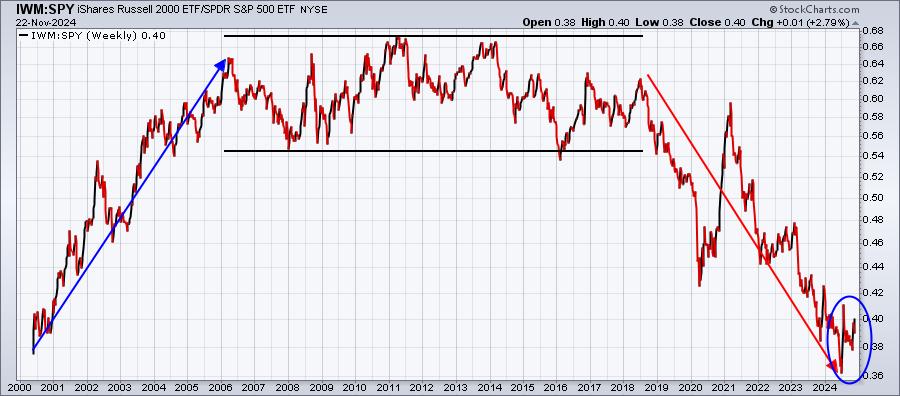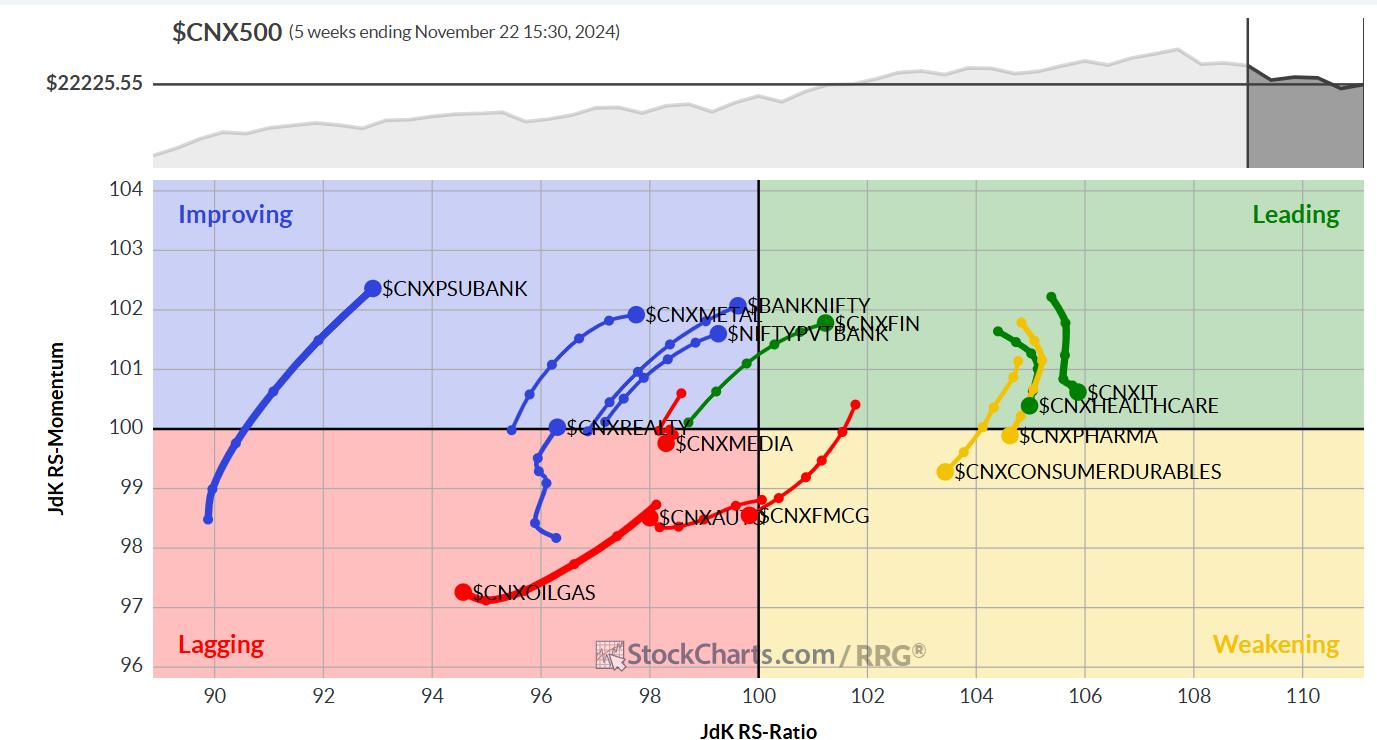Bearish stock traders suddenly find themselves in a difficult position as key technical indicators are signaling potential buy signals. In addition, liquidity has stabilized and cash flows for stocks have suddenly turned positive. This combination of factors suggests this rally has the potential to change the game. Get the full details below.
December’s CPI was good enough to send equities soaring and bond yields tumbling as the new consensus is that the Federal Reserve will hike interest rates by 25 basis points on February 1st and that this will be its last rate hike could. We’ll see what happens when the Fed actually makes its next move.
The US Ten-Year Bond (TNX) yield temporarily fell below the key 3.5% support level, and the S&P 500 (SPX) and the New York Stock Exchange Advance Decline Line (NYAD) both moved above their respective 200-day moving -averages. See below for more details on both.
Taken together, these indicators are on the verge of generating an unreserved buy signal unless there is a major reversal in the not too distant future, which, if it occurs, could mean this bear market could be over. Of course that remains to be seen. We’ve been here twice in this bear market (the summer rally and the failed Santa rally) but maybe the third time will be a stimulus.
Here is what I noted last week: “Bond yields are a far cry from their recent highs. This is because there is a growing body of private macro data, especially newer ones PMI and ISM Numbers that suggest the US economy has been slowing for months and that this slowdown may be accelerating.” In particular, data in these surveys pointed to a slowdown in inflation as well as a slowdown in the labor market. On the other hand, the December jobs report wasn’t overtly bearish, unless you consider that Ratio of full-time to part-time employees continues to indicate that many Americans either work part-time or supplement their main occupation with a part-time job.
That said, perhaps the silver lining is the slowdown in wages, which could be the indicator that gives the Fed leeway to slow or halt the pace of its rate hikes altogether. And that could be good enough for now to propel shares higher.
Bullish Developments: Yes. Total bullishness: Not yet.
For the past few months, I’ve stated in my weekly subscriber portfolio update that I would become bullish when the following conditions are met. Here you are:
- NYAD needs to move well above its 200-day moving average;
- There must be a rally in XED, which would mean that liquidity has improved;
- VIX has had to trade near its lows for a long time, which would mean put buyers are mostly gone and market makers have no choice but to buy calls and index futures to hedge their bets;
- There needs to be a clear signal from the Fed that the rate hike cycle is not just slowing down, it’s coming to an end.
So here we are at the moment. NYAD and VIX have made positive moves. XED is moving sideways, which is better than going down. And the Fed is hinting that it will slow its rate hikes, but hasn’t signaled an end yet.
Overall, the environment for equities has improved but does not necessarily call for an outright bullish stance. This means there is money to be made in this market by sticking with what works.
Check out what works with a free trial of my service. click here for more.
Expect a frenzy of buyers if mortgage rates continue their downward trend
It’s time to watch the housing market, including data on existing homes and builders over the next few weeks. That’s because a good-enough CPI and the steep decline in bond yields have reshaped the entire forward-looking yield structure.
That means any potential buyer who’s been waiting for a drop in interest rates could decide their opportunity has arrived. And if I am correct, the rush to close will be quite aggressive as buyers will put plans into action amid fears of a price reversal that could certainly occur.
The market is certainly betting on it as shares of online real estate broker Redfin (RDFN), whose shares recently traded below $5 (making them penny stocks), have surged significantly higher on the CPI news. Additionally, bottom fishermen had been moving in for the past few weeks, rightly expecting some sort of good news.
On the other hand, the resurgent DR Horton (DI), which has been in our Rainy Day portfolio for a few months, continues its steady rise.
I own shares in DHI.
The Fed has a fine line to walk
Prominent readers know that over the past year I have focused on the population shift to the Sunbelt as the dominant macro trend. In fact, this is probably the most important economic issue of the moment. And it is directly related to the employment and CPI data in the future.
That’s because although the rate of CPI growth has leveled off, service inflation and housing costs remain stubbornly high. This is important as there is low housing supply and a potentially tight labor market in the Sunbelt, creating the potential for these two categories of the CPI to remain higher than others, which in turn could skew the data in ways the Fed actually wants “Keep interest rates higher for longer”.
Now that the housing sector accounts for about 16% of GDP, migration is picking up speed — which, based on the sudden increase in the number of out-of-state license plates I’m seeing in the Dallas Fort Worth Metroplex (DFW), and hard data, is already in full swing – I expect a resurgence in the housing market here shortly. And that means an increase not only in construction trades, but also in other areas of employment.
This is because more and more companies are moving to DFW and other areas of Texas. Apple (AAPL) is expanding its headquarters in Austin, TX, while Goldman Sachs (GS) has already quietly moved much of its operations to Richardson, a Dallas suburb. gold man also plans to move 5,000 employees to a new headquarters north of downtown Dallas and lease even more space prior to construction of the new headquarters. Yesterday it was announced that Tesla (TSLA) is expanding its activities in Houston.
If I’m correct, from what I see at the moment, this activity will impact GDP beyond just housing data. In other words, some areas of the country could face a significant economic slowdown, but the data may not really reflect that, as Sunbelt activity more than makes up for the lack of activity elsewhere.
NYAD breaks the 200-day moving average
The New York Stock Exchange’s (NYAD) Advance Decline Line broke above its 50-day moving average on 1/6/23 and held higher until crossing its 200-day moving average a week later. A sustained move above the 200-day moving average would be a very bullish move.
Note that all countertrend rallies in this bear market have failed at the 200-day moving average. That is, if this break sustains above this key line, the chances of a new bull market will increase.
For its part, the CBOE Volatility Index (VIX) recently made new lows. That too is bullish. When the VIX rises, stocks tend to fall as rising put volume is a sign that market makers are selling stock index futures to hedge their put sales to the public. A fall in the VIX is bullish as it means less buying of put options.
Liquidity has remained surprisingly stable despite the Fed’s QT maneuvers as the Eurodollar Index (XED) has trended sideways to slightly higher in recent weeks.
The S&P 500 (SPX) found support at 3800 and is now testing its 20-, 50- and 200-day moving averages and the 4000 area.
But here’s the great news. Accumulation/Distribution (ADI) and On Balance Volume (OBV) have both surfaced. That means there is now net buying in stocks.
The Nasdaq 100 Index (NDX) continues to lag heavily behind SPX. It’s still possible that it has hit a triple bottom, with the 10,500-10,700 price range bringing some short-covering. The problem is that the 12,000 area and the 200-day moving average together form a sizeable resistance band.
For the most up-to-date information on options trading, visit here Options trading for dummies, now in its 4th edition – Get your copy now! Now also available as an Audible audiobook!
 #1 New Release in Options Trading!
#1 New Release in Options Trading!
Good news! I created my NYAD complexity chaos diagram (on my YD5 Videos) and a few other favorites public. You can find them here.
Joe Duarte
In the money options
Joe Duarte is a former money manager, an active trader and a widely recognized independent stock market analyst since 1987. He is the author of eight investment books, including the bestseller Trading options for dummiesrated a TOP option book for 2018 from Benzinga.com and now in its third edition, plus The book “Invest everything in the 20s and 30s”. and six other trading books.
The book “Invest everything in the 20s and 30s”. is available at Amazon and Barnes and Noble. It was also recommended as Washington Post Color of Money Book of the Month.
For Joe’s exclusive stock, options and ETF recommendations, visit your mailbox each week https://joeduarteinthemoneyoptions.com/secure/order_email.asp.

Joe Duarte is a former money manager, active trader and widely respected independent stock market analyst dating back to 1987. His books include Best Selling Trading Options for Dummies, A TOP Options Book for 2018, 2019 and 2020 from Benzinga.com, Trading Review.Net 2020 and Market Timing for Dummies. His latest bestseller, The Everything Investing Guide in your 20s & 30s, was named Color of Money Book of the Month by The Washington Post. To have Joe’s exclusive stock, options and ETF recommendations delivered to your inbox each week, visit the Joe Duarte In The Money Options website.
learn more





